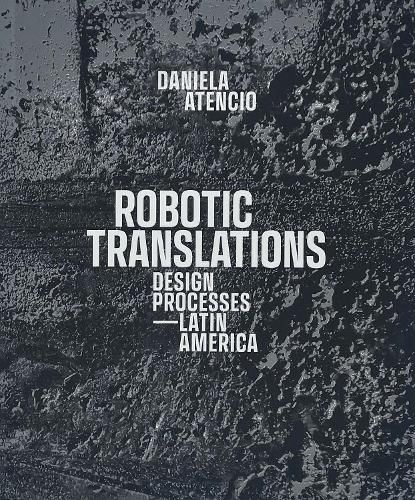Readings Newsletter
Become a Readings Member to make your shopping experience even easier.
Sign in or sign up for free!
You’re not far away from qualifying for FREE standard shipping within Australia
You’ve qualified for FREE standard shipping within Australia
The cart is loading…






This book develops findings and methodological work process of approaches and explorations through a 6-axis robotic arm, hybrid representations, and material conceptualizations in Latin America in the research-creation project: Programmed Materialism. This research-creation provides examples of a better understanding of history, architecture, and landscapes by creating architectural artifacts in a journey between the physical and the digital, as the agencies involved in these explorations provide lessons for students of architecture and trigger pedagogical and didactical reflections.
This publication focuses on two issues associated with a technological approach and its relationship with research in the architectural discipline. First, the investigation concerns specific technological tools (software and hardware) based on interactions with a 6-axis robotic arm and deepens the scholarly exploration of design strategies that can amplify creative pedagogies for undergraduate architecture students in Latin America. Second, advanced prototyping in a research and creation process allows questioning disciplinary issues through speculative and narrative techniques or conceptualizations of architectural objects (artifacts). In this case, the research-creation objectives become pedagogical objects, examining a disciplinary reinterpretation, or reintegration, with the digital world; likewise, opening contemplation on how learning from specific stylistic or conceptual issues can generate new perspectives and promote new inflections and representations for the design process.At its most ambitious, the discussion is about the past and future of architecture and its encounter with technology, addressing with a sense of urgency the actual local conditions where it operates. This work constitutes a history of the relationships between styles and technology, between objects and artifacts, or in this specific case, hyper-artifacts, by unlocking the material capacities of the objects, establishing new qualities, arrangements, and above all, new responsibilities and interpretations of the cases studied. This research-creation points to new conceptual conclusions.
$9.00 standard shipping within Australia
FREE standard shipping within Australia for orders over $100.00
Express & International shipping calculated at checkout
This book develops findings and methodological work process of approaches and explorations through a 6-axis robotic arm, hybrid representations, and material conceptualizations in Latin America in the research-creation project: Programmed Materialism. This research-creation provides examples of a better understanding of history, architecture, and landscapes by creating architectural artifacts in a journey between the physical and the digital, as the agencies involved in these explorations provide lessons for students of architecture and trigger pedagogical and didactical reflections.
This publication focuses on two issues associated with a technological approach and its relationship with research in the architectural discipline. First, the investigation concerns specific technological tools (software and hardware) based on interactions with a 6-axis robotic arm and deepens the scholarly exploration of design strategies that can amplify creative pedagogies for undergraduate architecture students in Latin America. Second, advanced prototyping in a research and creation process allows questioning disciplinary issues through speculative and narrative techniques or conceptualizations of architectural objects (artifacts). In this case, the research-creation objectives become pedagogical objects, examining a disciplinary reinterpretation, or reintegration, with the digital world; likewise, opening contemplation on how learning from specific stylistic or conceptual issues can generate new perspectives and promote new inflections and representations for the design process.At its most ambitious, the discussion is about the past and future of architecture and its encounter with technology, addressing with a sense of urgency the actual local conditions where it operates. This work constitutes a history of the relationships between styles and technology, between objects and artifacts, or in this specific case, hyper-artifacts, by unlocking the material capacities of the objects, establishing new qualities, arrangements, and above all, new responsibilities and interpretations of the cases studied. This research-creation points to new conceptual conclusions.